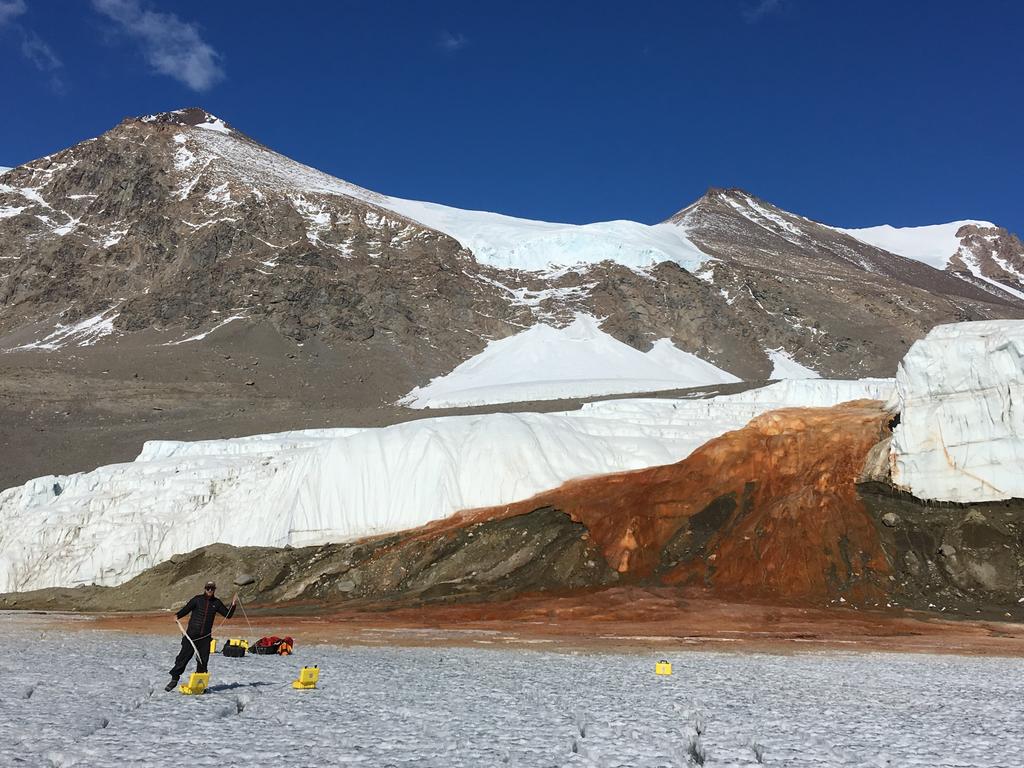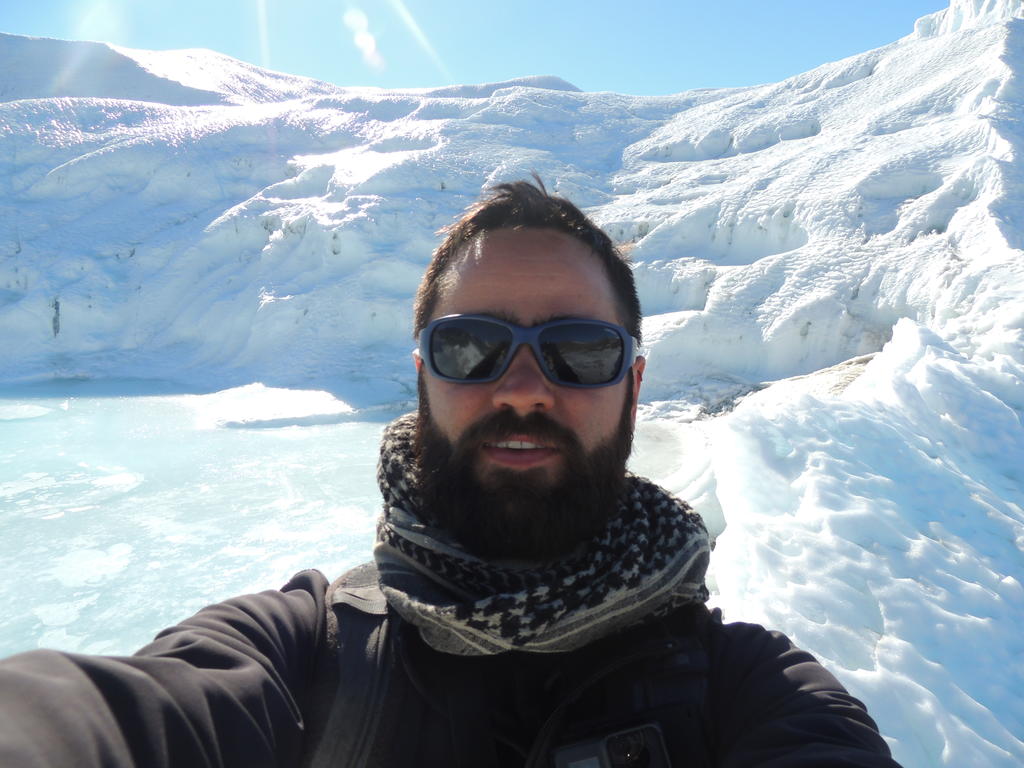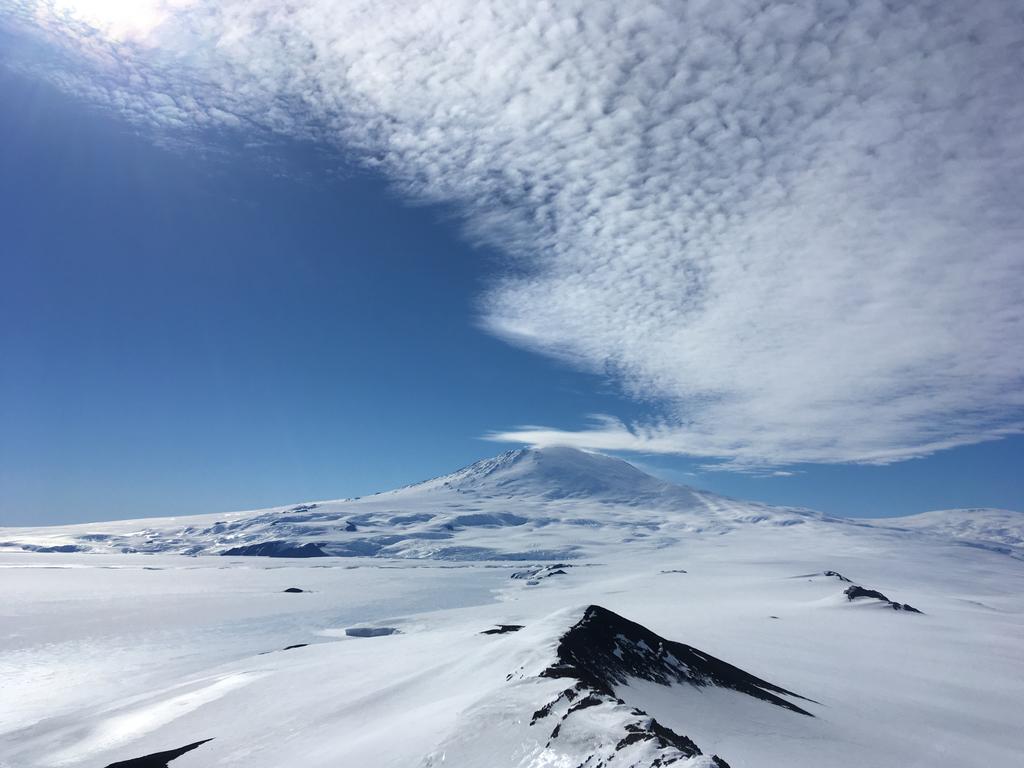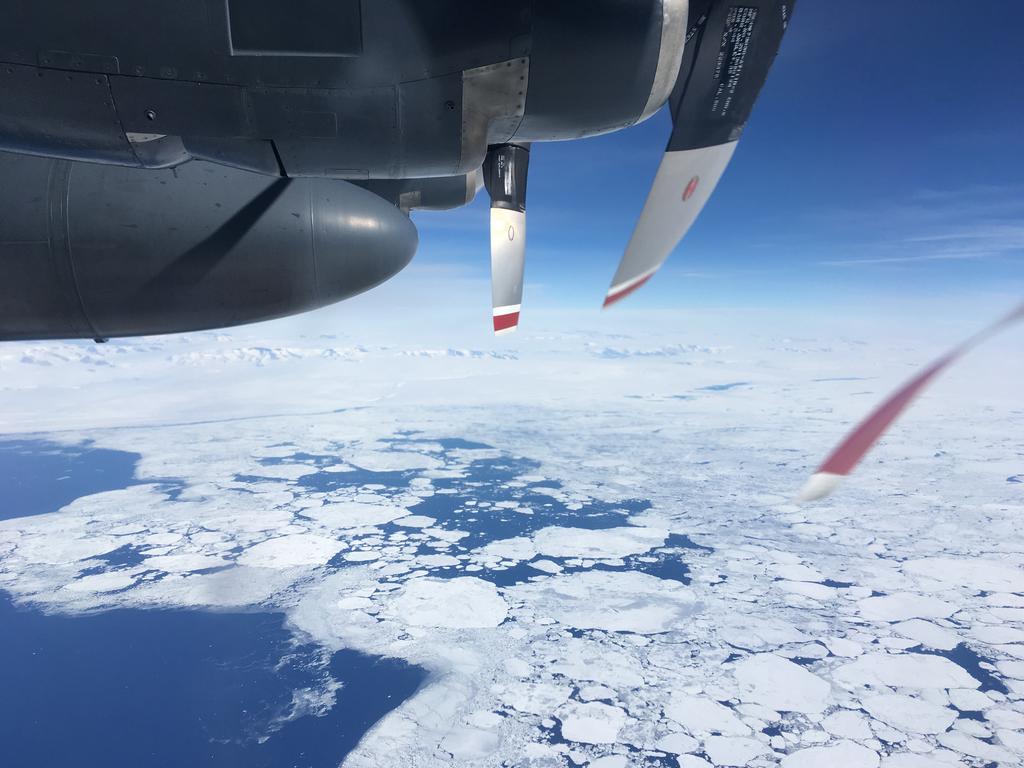1 / 20

Landing on the southern most continent on a C-17 Globemaster U.S. Air Force airplane.
2 / 20

Geophysicist Denys Grombacher on a morning hike to work on the sea-ice outside of McMurdo station
3 / 20

Sea-ice training...the USAP (REFF) makes sure you know how to navigate and survive out in the tricky and harsh conditions of Antarctica
4 / 20

Nuclear Magnetic Resonance (NMR) deployment in Taylor Valley
5 / 20

Antarctica calls for particular ways to transport your geophysical equipment to the sites
6 / 20

Frozen bubbles in Lake Fryxell
7 / 20

The massive SkyTEM getting lifted by a B212 helicopter from the sea-ice
8 / 20

The SkyTEM system constists of a large fiber-glass frame where the cable of the transmitter (Tx) coil is attached. A large generator (center of frame) powers the whole system and allows the Tx to have pulses of currents of ~100 Ampere (huge!!). After the magnetic field, created by the current traveling in the Tx, propagated through the air, surface and subsurface, the electric currents induced in the ground by it generate a secondary magnetic field that is sensed by the receiver coil (Rx) which is located in a white frame in the stern of the system. All of this is to be able to have a sense of the electrical properties of the subsurface.
9 / 20

Geophysicist Lars Jensen connecting the SkyTEM rigg top the bottom of a B212 loudly hovering over him.
10 / 20

An NSF helicopter parked in the Wright Valley.
12 / 20

Micro-biologist Jill Mikuki and Professor Slawek Tulaczyk exploring Don Juan Pond, the second saltiest body of water on planet Earth.
13 / 20

The erosion patterns on the rocks of the Dry Valleys are beautiful, they are only caused by wind since there is not much liquid water altering the landscapes here.
14 / 20

Helping micro-biologist Jill Mikuki drill throuigh the thick ice of Lake Fryxell so her and her team can send a probe down to get water samples...SO COOL!
15 / 20

Dragging some equipment across the Marble Point camp
16 / 20

The dramatic scenery of the Blood Falls in Taylor Glacier. The blood-like color on the ice is caused by an iron saturated brine that surges out of the glacier and then oxidizes...the mechanisms that make this fluids being "pumped up" the glacier are still not very well explored, any ideas?
17 / 20

Denys setting up the NMR at Blood Falls
18 / 20

Selfie with Canada Glacier! The first glacier I had ever walked on
19 / 20

One of my absolute favorite parts of going to Antarctica was to be able to contamplate the epic Mount Erebus. Erebus is the southern-most active volcano in the world and one of the only few that actually has a lava lake on its crater! Without a doubt one of the most interesting volcanoes out there and it is one of my biggest dreams to be able to study and explore it...maybe one day!
20 / 20

When I was a kid my favorite toy was a model of a Hercules airplane (really), in December 2018 I got flown out of Antarctica on board of one of these amazing LC-130 Hercules of the Royal New Zealand Air Force.
